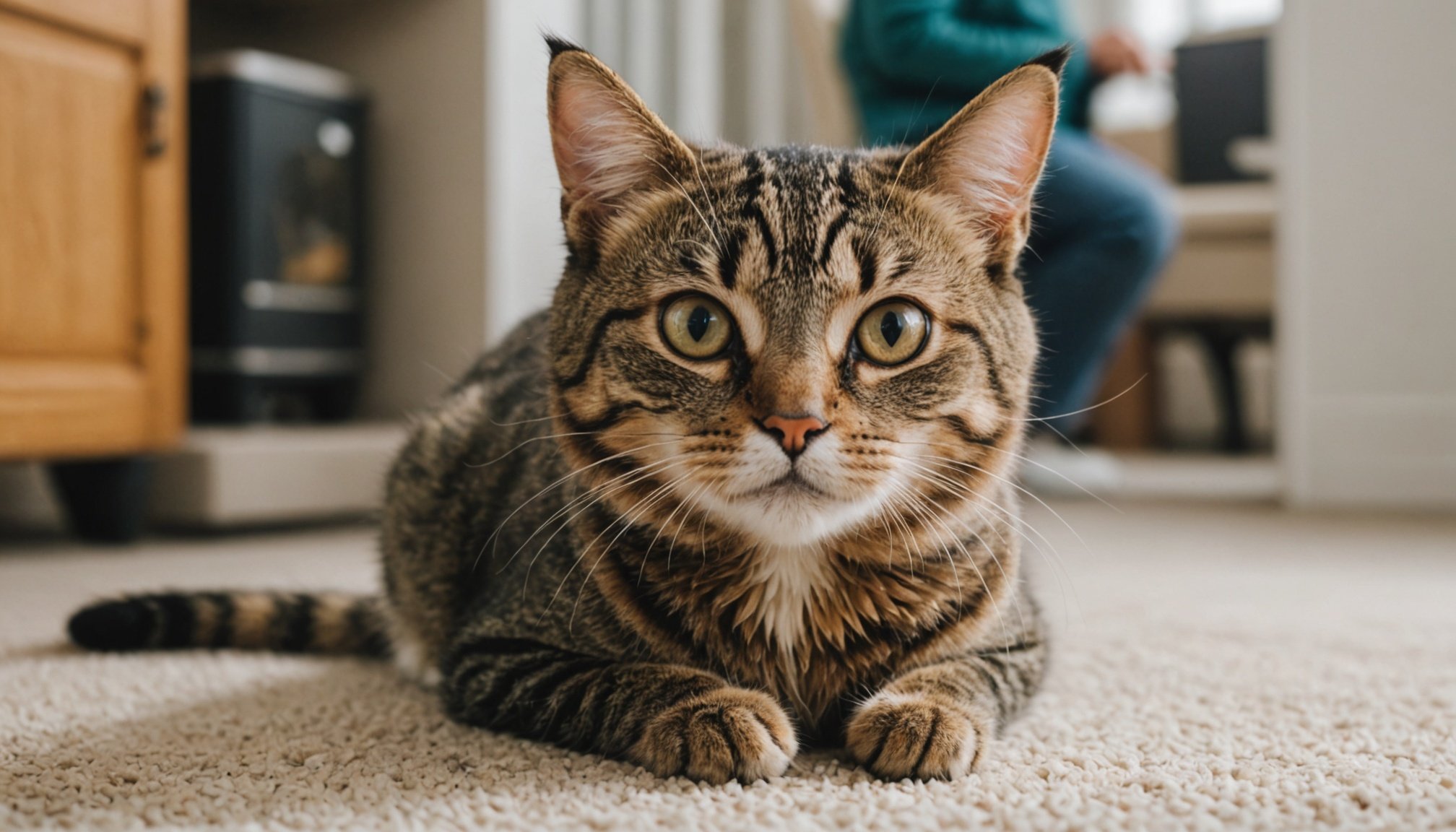Understanding Special Needs Cats
Caring for a special needs cat requires adapting to their unique requirements and providing specific care essentials. A special needs cat might have physical or neurological conditions, chronic illnesses, or behavioral issues that set them apart, thus requiring a tailored approach. Understanding these factors is pivotal in ensuring their well-being.
Special needs cats often face common health issues such as mobility problems, vision or hearing impairments, and chronic conditions like diabetes or heart disease. Recognising each cat’s individual needs is crucial to offer proper treatment and support. Integrating them into your home effectively demands keen observation and understanding of each cat’s nuances.
Also to discover : Identifying cat asthma attack alerts: key strategies for emergency readiness and awareness
It’s important to focus on the basics of care essentials. These include routine health checks, a balanced diet suited to their health conditions, and a safe and comfortable living space. Focusing on these factors helps foster a supportive environment for your special needs feline friend. Additionally, integrating care essentials into their daily routine ensures they lead a fulfilled life, adapted around their specific health conditions and limitations.
This understanding helps to skillfully navigate the intricacies of day-to-day life with a special needs cat. This knowledge forms the foundation for successful care, fulfilment, and a harmonious relationship.
Also read : What are the signs that my cat may be suffering from a urinary tract infection?
Preparing Your Home for a Special Needs Cat
Creating a cat-friendly environment involves careful consideration of both safety measures and accessibility. Each special needs cat may face different challenges, so adjustments should be tailored to their specific requirements. Consider common safety measures like securing furniture to prevent tip-overs and covering any sharp edges or corners. Adding ramps or stairs can help a cat with mobility issues navigate different levels safely.
When thinking about home preparation, it’s essential to ensure this space fosters independence and reduces stress. Cats with vision impairments, for instance, benefit from a consistent layout with minimal obstacles. Moreover, providing quiet areas gives them a refuge when overwhelmed or overstimulated by the household environment.
To meet a special needs cat’s unique requirements, having essential supplies on hand is crucial. These may include specialised food dishes for easy access, litter boxes with lower sides, or soft bedding for joint support. Consider interactive toys that suit their abilities, promoting both mental and physical stimulation.
Preparing your home effectively addresses the care essentials for a special needs cat. It paves the way for an enriching and supportive environment, ensuring their well-being and aiding in a smoother transition into household life.
Health Management and Care
Managing health care for special needs cats involves understanding their medical requirements and establishing a robust veterinary routine. Regular veterinary check-ups are crucial to monitor their condition and adjust treatment plans as necessary. These visits help detect emerging health issues early and ensure that the care essentials are being met.
Regular Veterinary Check-ups
Scheduled vet visits are imperative for maintaining your special needs cat’s well-being. These appointments allow for continuous health assessments and the early identification of potential problems, ensuring your cat receives the best care tailored to its unique requirements.
Understanding Medication Needs
Medication management is a vital component of care. It’s essential to understand the specific medication needs of your cat. Each special needs cat may require different types or dosages of medication, often administered in varied forms. Tips for administering medications include using treats to disguise pills or employing a syringe for liquid formulations. Always follow vet guidance for safe and effective administration.
Nutrition and Diet Adaptations
Adapting nutrition to meet health needs plays a significant role in health management. Dietary adjustments might include specialized foods for conditions such as diabetes or kidney disease. A balanced diet supports overall health, complements medication management, and enhances the quality of life for your special needs cat.
Behavioral Challenges and Solutions
Caring for a special needs cat often entails navigating a landscape of unique behavioral problems. These cats may exhibit anxiety, excessive grooming, or even aggression due to their conditions. Understanding the root causes of these behaviors is crucial to tailoring effective responses and mitigation strategies.
Addressing specific cat behavior issues starts with observation. Recognising patterns and triggers allows for personalised interventions. For instance, anxiety might stem from disorientation in their environment. Gradually increasing exposure to new areas and using calm-inducing pheromone diffusers can alleviate stress.
Another approach involves employing targeted training techniques. Positive reinforcement is key. Reward desirable behaviors with treats or affection to encourage repetition. It’s also essential to provide mental and physical stimulation through interactive toys or puzzle feeders, which help maintain an enriched environment and minimise negative behaviors.
Lastly, fostering positive social interactions is vital. Introducing activities that promote engagement—like play sessions or grooming routines—can help develop trust and reduce behavioural issues. Keep a close watch on body language, as it provides insights into comfort levels and potential distress signals. By addressing these aspects, you create a nurturing atmosphere that supports a healthier, more harmonious life for your special needs feline companion.
Introducing a Special Needs Cat to Other Pets
Bringing a special needs cat into a home with other pets requires thoughtful planning and careful execution to ensure harmony in a multi-pet household. Start by creating a separate, secure space for your new feline. This helps them acclimate without pressure and gives existing pets a chance to adjust gradually. Monitor and gauge each pet’s reaction carefully during the initial stages of interaction.
A successful pet introduction hinges on understanding each animal’s body language. Look for signs of openness and reservation, such as tail posture or vocalizations. Step by step, help pets become accustomed to each other’s scents by exchanging bedding or toys, setting a calm precedent before face-to-face interactions.
Once initial separation proves positive, controlled meetings should follow. Keep early interactions brief and positive, using treats or praises to reinforce calm behavior. Observation is key; remain vigilant to prevent any souring of the process. Socialization strategies such as shared play or feeding times can build camaraderie over time, fostering a stronger setup for coexistence.
By carefully orchestrating this process using gradual introductions and evaluating interactions consistently, a balanced environment can emerge and flourish, allowing your special needs cat to seamlessly integrate with other household pets.
Building Family Support and Involvement
Creating a solid support system is vital when caring for a special needs cat. Involving the entire family fosters an environment of understanding and shared responsibility. Begin by educating family members on the unique requirements of your special needs cat. Clear communication ensures everyone is aware of specific care essentials and can provide assistance when needed.
Encouraging family engagement can be achieved through planned activities. Organize regular tasks that allow for emotional bonding, such as feeding, grooming, or playtime. These activities not only strengthen the cat’s connection with family members but also distribute caregiving duties, making it a shared effort.
To foster effective family involvement, designate roles or schedules to ensure consistent care. This structure helps maintain a routine that suits the cat’s needs, balancing responsibilities in a manageable way. Additionally, it’s important to create opportunities for open discussions. Share any changes in the cat’s behavior or health to address concerns promptly, ensuring everyone stays informed and supportive.
By cultivating a family-centric approach, your special needs cat receives the tailored care they require, promoting well-being while reinforcing family bonds. This collective involvement transforms the caregiving experience into a rewarding journey for everyone involved.
Resources for Support and Information
Navigating the journey with a special needs pet can be overwhelming, but resources are available to help. Connecting with special needs pet organizations can provide valuable guidance. These groups often offer comprehensive educational materials and foster a community of shared experiences, easing the caretaking process.
Online communities dedicated to the support of special needs pets can be an invaluable resource. These platforms allow pet owners to share personal stories, exchange advice, and provide emotional support. Engaging with such communities not only offers practical insights but also cultivates a sense of camaraderie among caregivers.
It’s also vital to tap into community resources tailored for special needs pets. Local veterinarians, pet stores, or animal shelters might have programs or advice specific to your pet’s requirements. Building a network with professionals ensures quality care rooted in expertise.
Lastly, explore educational resources to deepen your understanding of special needs care. Books, articles, and online courses can expand your knowledge, equipping you to provide the best possible care. By leveraging these resources, you ensure a network of support that enhances both you and your pet’s experience, fostering a nurturing environment for your special needs companion.










